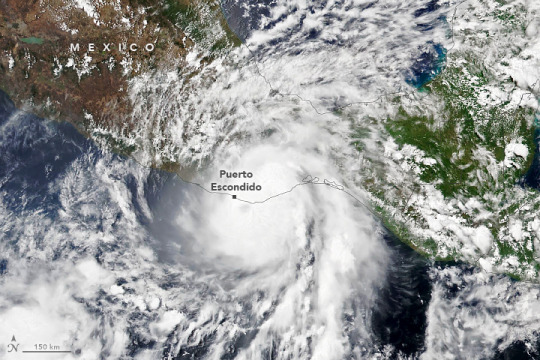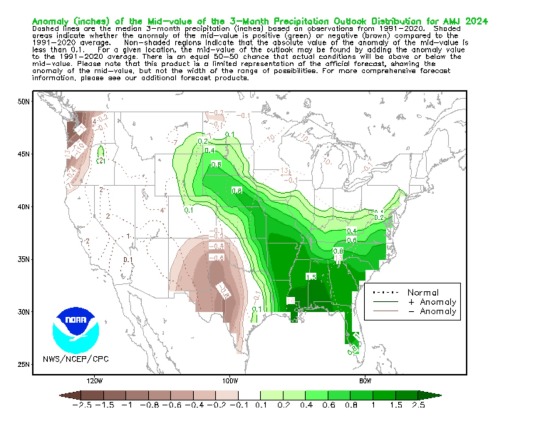#NOAA Climate Prediction Center outlook
Text
NWS: Cold and dry weather favored over the next 6-10 days
New Post has been published on https://aroundfortwayne.com/news/2022/10/12/nws-cold-and-dry-weather-favored-over-the-next-6-10-days/
NWS: Cold and dry weather favored over the next 6-10 days

The latest NOAA Climate Prediction Center outlook for the next 6 to 10 days.
#Fort Wayne Indiana#National Weather Service Northern Indiana#NOAA Climate Prediction Center#NOAA Climate Prediction Center outlook#weather story
0 notes
Text
"The last week of November saw a significant snowstorm impact the central and northern Rockies as well as the central Plains and around the Great Lakes. This was then followed by well below normal temperatures over the eastern half of the nation, with freezing temperatures observed all the way to the Gulf Coast. As we head into the first month of meteorological winter, was this event a harbinger of the month ahead, or will temperatures revert to a milder pattern, more typical of El Niño? Let’s see what NOAA's Climate Prediction Center (CPC) predicts for the month ahead."
0 notes
Photo

The Climate Prediction Center (CPC) is tasked with long-term, seasonal forecasting for the United States. Their latest outlook from November has a few nuggets about the upcoming Spring. First, let’s look at the text:
“below normal precipitation is favored over
parts of the Northwest and Northern Plains, as well as in the Southern Plains
from spring 2024 through early fall 2024.”
Then, let’s take a look at the graphic above.
The top illustration is the precipitation for March-May, showing a belt of above-normal precip from the Southeast back into the Plains.
That area shrinks and moves away from the Plains for April-June (bottom-left) before being replaced by an area of below-normal precipitation over parts of the Southern Plains in the May – July outlook (bottom-right).
Taken as a whole, it does seem like the CPC is expecting a drier-than-normal back half of the Spring over the heart of the traditional alley, but things could be busy early across the Southeast and back into the Southern Plains. This would match some past El Niño springs that had rapid and wild starts and tepid, quiet back halves. 2007 immediately comes to mind as one example of this.
However, seasonal forecasting is an imperfect science. Regardless, speculation is what storm chasers do this time of year.
2 notes
·
View notes
Photo

Hurricane Agatha Strikes Mexico Hurricane season in the eastern Pacific is off to an early and potent start. Though May storms are rare there, Hurricane Agatha struck western Mexico, near Puerto Escondido, bearing maximum sustained winds of 105 miles (169 kilometers) per hour on May 30, 2022. That made the category 2 storm the strongest May hurricane to make landfall along the Pacific coast of Mexico since modern record keeping began in 1949, according to the National Hurricane Center. The Visible Infrared Imaging Radiometer Suite (VIIRS) on the NOAA-20 satellite acquired this natural-color image of the storm at 1:35 p.m. local time (19:35 Universal Time) on May 30, 2022, a few hours before the storm made landfall. Agatha brought intense downpours and howling winds to several tourist beaches and fishing towns in an otherwise sparsely populated region before weakening rapidly as it moved northward over the mountainous terrain of southern Mexico. Prevailing trade winds typically steer west and out to sea, but in this case a low-pressure trough dipped far enough south to pull Agatha toward land, reported meteorologist Jeff Masters for Yale Climate Connections. Hurricane forecasters are watching the possibility that Agatha’s remnants will become more organized and strengthen over the Gulf of Mexico as they move toward Florida. NOAA and other federal and state agencies lead the forecasting of and response to hurricanes in the United States, with NASA playing a supporting role in developing experimental tools and providing key data to those agencies. NASA’s Earth Science Applied Sciences program works to streamline the flow of information to international science institutions, governments, and aid groups as they use and customize data products from freely available NASA data. The eastern Pacific hurricane season officially runs from May 15 through November 30. The peak months of the season are July through September. NOAA’s seasonal outlook for the eastern Pacific hurricane season in 2022 indicates that a below-normal season is likely, while the seasonal outlook for the Atlantic Ocean predicts a more active season than normal. The ongoing La Niña and resulting changes in vertical wind shear in key regions of hurricane formation and development are one of the key factors behind these forecasts. NASA Earth Observatory image by Lauren Dauphin, using VIIRS data from NASA EOSDIS LANCE, GIBS/Worldview, and the Joint Polar Satellite System (JPSS). Caption by Adam Voiland.
5 notes
·
View notes
Text
Long Term Forecast
NOAA updated our long term forecasts on 12/21. Put simply enough, they predict highertemperatures and less precipitation. Climate Prediction Center – Seasonal Outlook
If the folks at NOAA are right – and they usually are – it might be a good idea to plan for an early gardening season. As always, click the link if you want more information.

View On WordPress
0 notes
Text
U.S. Winter Outlook: Wetter South, warmer North
This year, El Nino is in place heading into winter for the first time in four years, driving the outlook for warmer-than-average temperatures for the northern tier of the continental United States, according to NOAA’s U.S. Winter Outlook released today by the Climate Prediction Center — a division of the National Weather Service.
0 notes
Text
NOAA Predicts Up to 21 Atlantic Hurricanes in 2023 Season
NOAA explains "The main climate factors expected to influence the 2023 Atlantic hurricane activity are the ongoing El Nino and the AMO."
National Oceanic and Atmospheric Administration (NOAA) updated its forecast for the ongoing 2023 Atlantic hurricane season (June 1 through November). Scientists at the agency’s Climate Prediction Center, a division of the National Weather Service, upgraded their assessment from near-normal activity level to above-normal on August 10, 2023.
The 2023 outlook covers the six-month Atlantic hurricane…

View On WordPress
0 notes
Text
0 notes
Link
The latest ENSO outlook from NOAA’s Climate Prediction Center was released this week. They are now predicting that the current lengthy La Niña is likely to end by early spring and move through a neutral period in late spring and early summer before transitioning to El Niño later in summer
0 notes
Text
Keeping an eye on hurricanes this season
Keeping an eye on hurricanes this season
On May 24, the National Oceanic and Atmospheric Administration (NOAA) released its outlook for the forthcoming Atlantic hurricane season. Forecasters at the National Weather Service’s Climate Prediction Center predict that this hurricane season, which starts on June 1 and ends November 30, will have 14 to 21 named storms – with 6-10 of them becoming hurricanes and 3-5 of them becoming major…
View On WordPress
0 notes
Text
This is Winter Safety Awareness Week in Ohio
This is Winter Safety Awareness Week in Ohio
Staff report
| Bucyrus Telegraph-Forum
Ohioans urged to prepare for winter
COLUMBUS — Ohioans are likely to experience wetter-than-average conditions in the Great Lakes this winter, according to NOAA’s U.S. Winter Outlook released by the Climate Prediction Center — a division of the National Weather Service. There is a 75% chance of a weak La Niña, which returns for the third consecutive…
View On WordPress
0 notes
Text

More than a few email requests for our official seasonal winter weather forecast. I don't issue a personal winter weather forecast; rather, I refer to the winter forecasting experts at NOAA and the Climate Prediction Center. Their latest update for the 2023-24 season is out now and available at https://www.noaa.gov/news-release/us-winter-outlook-wetter-south-warmer-north
0 notes
Text
0 notes
Photo

NOAA’s Spring Outlook shows better-than-average chances of increased precipitation across the Southern U.S. and then arcing back into the Southern and Central Plains. In most years, more precipitation than normal in these areas would tend to indicate a busier severe weather season as well.
Last week, the Climate Prediction Center released its April, May, and June Spring outlook—the outlook storm chasers pay the most attention to. This one brings the possibility of an interesting spring storm season.
But Yet: Even where drier than normal prognostication exists, severe weather chances will exist. Some severe weather events don’t produce a lot of rain.
The Bottom Line: This data point tends to point towards a much different season this year than the previous ones and fits within many analog years of busier storm seasons in the Spring months. But every year is different, and we’ll only truly know how this year turns out after it is over.
1 note
·
View note
Text
Winter Weather Outlook
For the third year in a row, La Niña will return to the United States, driving warmer temperatures in the Southwest, the Gulf Coast, and the entire Eastern Seaboard, according to the Climate Prediction Center, a division of the National Weather Service. Beginning in December 2022 and continuing until roughly February 2023, the National Oceanic and Atmospheric Administration (NOAA) has predicted dry conditions along the South and wet weather for the Ohio Valley, Great Lakes, Northern Rockies, and the Pacific Northwest.
Michael Farrar, Ph.D., director of the National Centers for Environmental Prediction said, “The hardworking forecasters at NOAA’s Climate Prediction Center produce timely and accurate seasonal outlooks and short-term forecasts year-round. NOAA’s new supercomputers are enabling us to develop even better, more detailed forecast capabilities, which we will be rolling out in the coming years.”
In collaboration with the National Integrated Drought Information System (NIDIS), NOAA forecasters constantly observe the drought conditions that have plagued the Western United States since late 2020. They also track the Central United States as low-water conditions are afflicting the area.
“Drought conditions are now present across approximately 59 percent of the country, but parts of the Western U.S. and Southern Great Plains will continue to be the hardest hit this winter. With the La Niña climate pattern still in place, drought conditions may also expand to the Gulf Coast,” said Jon Gottschalck, chief of the Operational Prediction Branch in NOAA’s Climate Prediction Center.
The greatest warmer-than-average weather will occur in Western Alaska, the Central Great Basin, the Southwest, the Southeast, the Atlantic Coast, and the Southern Plains. Below-normal temperatures will stretch from the Pacific Northwest eastward to the Western Great Lakes and the Alaskan Panhandle.
In terms of precipitation, Western Alaska, the Pacific Northwest, the Northern Rockies, the Great Lakes, and the Ohio Valley should brace themselves for wetter-than-average conditions. Parts of California, the Southwest, Southern Rockies, Southern Plains, the Golf Coast, and the Southeast will see drier-than-average precipitation.
Widespread drought will affect the West, Great Basin, central-to-southern Great Plains, the middle and lower Mississippi Valley, South-central, and the Southeastern United States. Moreover, the already-established drought conditions are expected to improve across the Northwestern United States in the coming months.
Do you have all the cold-weather gear you need for winter? Are you prepared? Check out our supplies, available online and get what you need today…before you’ll need it tomorrow.
Wolf Survival Gear is a hub for your prepping and survival needs. We are your trusted resource for concerned families, avid hunters, or serious preppers. Make us your one-stop-shop and prepare now, before you’ll need it later.
0 notes
